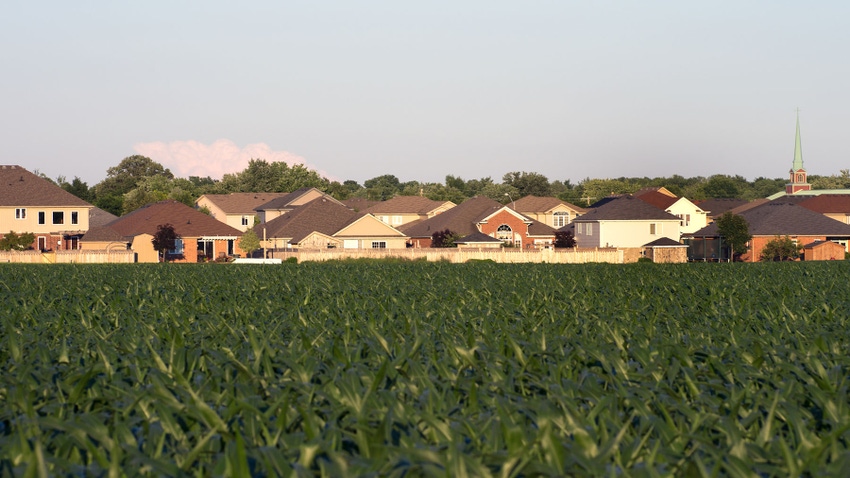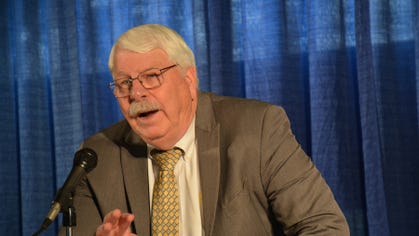
At a Glance
- Real problem, no question.
- Rub between development, agriculture.
- Funding for farmland preservation trust fund is key.
Of all the issues North Carolina Agriculture Commissioner Steve Troxler deals with every day, none may be more pressing than the rapid loss of farmland to development.
“The alarming thing is American Farmland Trust says North Carolina ranks number two in the nation behind Texas in the probability of the loss of farmland between now and 2040, and it ranges from about 1.4 million acres to 1.6 million acres. We are sitting on about 8 million acres (of farmland in North Carolina), so it’s a pretty big percentage of loss if it all happens. The one thing I know is we can’t continue to grow this industry if we don’t have the natural resources available to do it. Unfortunately, or fortunately, farmland is very attractive for development. Most of the time it’s been cleared, it’s the best land. We’ve got a real problem, it’s no question,” Troxler said in an interview with Southeast Farm Press.
That’s why farmland preservation remains a top priority for the North Carolina Department of Agriculture and Consumer Services. And it is a key focus for Troxler who was sworn into his first four-year term as agriculture commissioner in 2005.
“I guess it’s because I’ve lived in the shadow of Greensboro all my life, and that’s where my farm is. And I have seen the development take place. When I was farming at the height of my farming career, I think I was operating 11 farms, including my own, and today I think five or six of those farms are fully developed out and covered up with rooftops. I see it. I feel it,” Troxler explains.
Troxler hopes the department’s Ag Development and Farm Preservation Trust Fund will help reverse the loss of valuable farm and forest land in North Carolina. And he hopes funding for the program will become a bigger priority for the North Carolina General Assembly.
“The Trust Fund has done some amazing work. We actually have protected about 30,000 acres. We celebrated that this year. But when you look at how much we’re losing, we’re not doing nearly enough, and it is a function of money. With land prices like they are now, it does take a lot of money to protect the farmland and forestland. Is it a big priority for North Carolina? It hasn’t been,” Troxler says.
Troxler notes that the leadership of the legislature has continually supported funding of the trust fund, but not at the same level as the funding of other trust funds in the state. Troxler says this tells him that it is not a top priority for the legislature.
“There is a rub between development and agriculture when it comes to the development of these lands. In a lot of cases a realtor will look at a piece of property and visualize a commercial building or a big subdivision. I look at a piece of land, and I see a corn field and a soybean field and a wheat field,” Troxler says.
“I don’t want it to get to the point that we’re like the states that have very robust farmland preservation programs, and the reason is they have lost all of their farmland. Some of the states are spending a tremendous amount of money. I remember being told that New York State has a really good program because they figured out if they didn’t protect their farms in upstate New York, New York City was not going to have clean drinking water. States with robust programs have lost a tremendous amount of farmland.”
Moreover, loss of farmland and forestland to solar panels remains a concern of the agriculture commissioner. He says it is an issue that must be addressed.
“I wish we could have a do over. I think we could have had the same size solar industry in North Carolina that we have now had we been more careful about where we place these facilities. But once again it goes back to farmland being attractive because it’s clear, and most of the time, it’s fairly flat,” Troxler says.
“It’s hard to get a realistic figure on how much we have lost, but a few years ago, and there’s been a lot of development since then, but we did a backwards calculation based on kilowatts of output at that time came up with about 45,000, 46,000 acres. I am sure that has greatly increased since that period of time. It’s a problem, and it’s something that we do need to look at in the future, where do we put these solar facilities and not do damage to the natural resources.”

Farmland preservation was a key topic in North Carolina Agriculture Commissioner Steve Troxler annual state of North Carolina Agriculture address delivered during the Ag Development Forum at the Holhouser Building at the N.C. State Fairgrounds in Raleigh Feb. 2 during the Southern Farm Show. (John Hart)
About the Author(s)
You May Also Like






